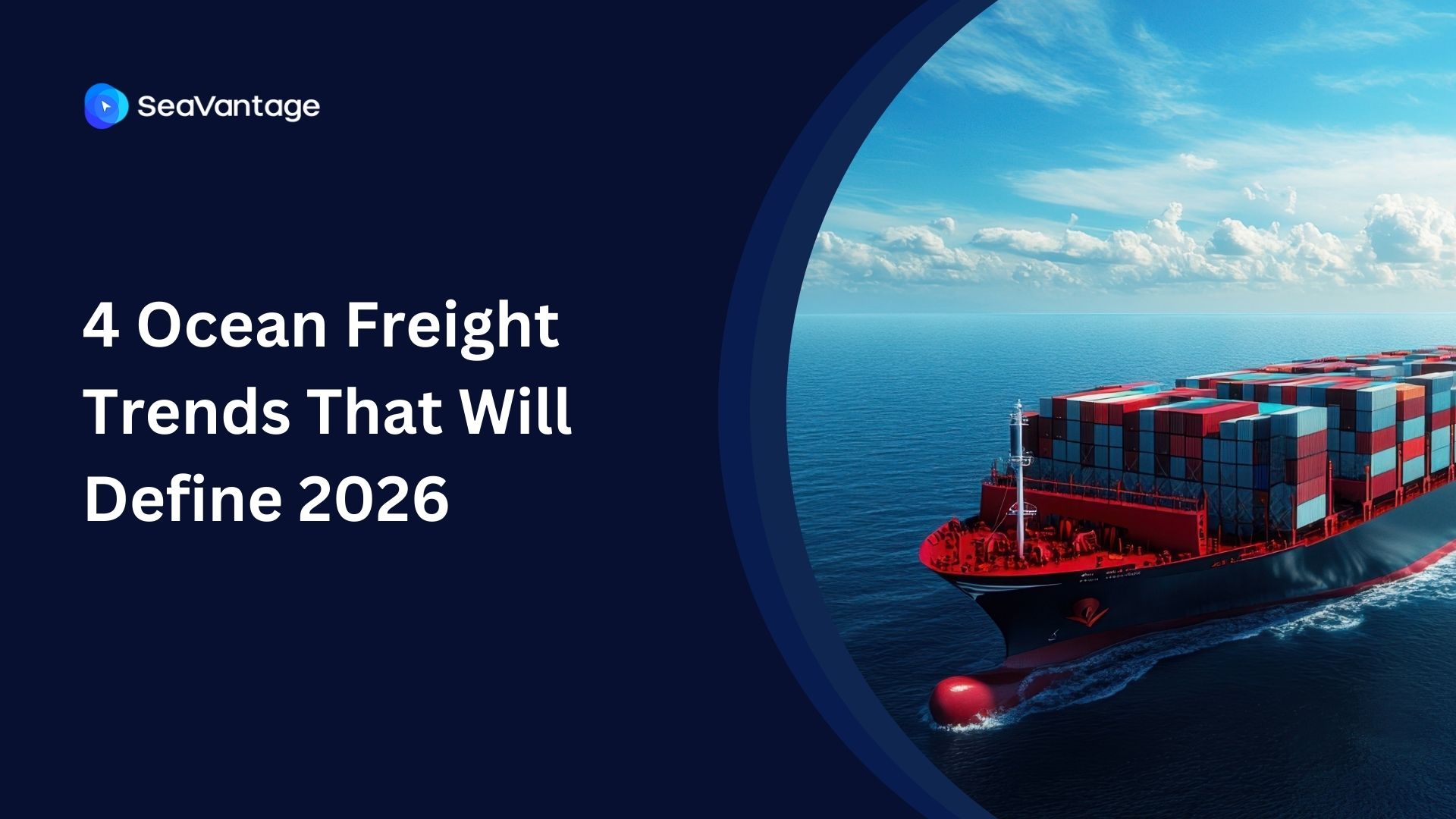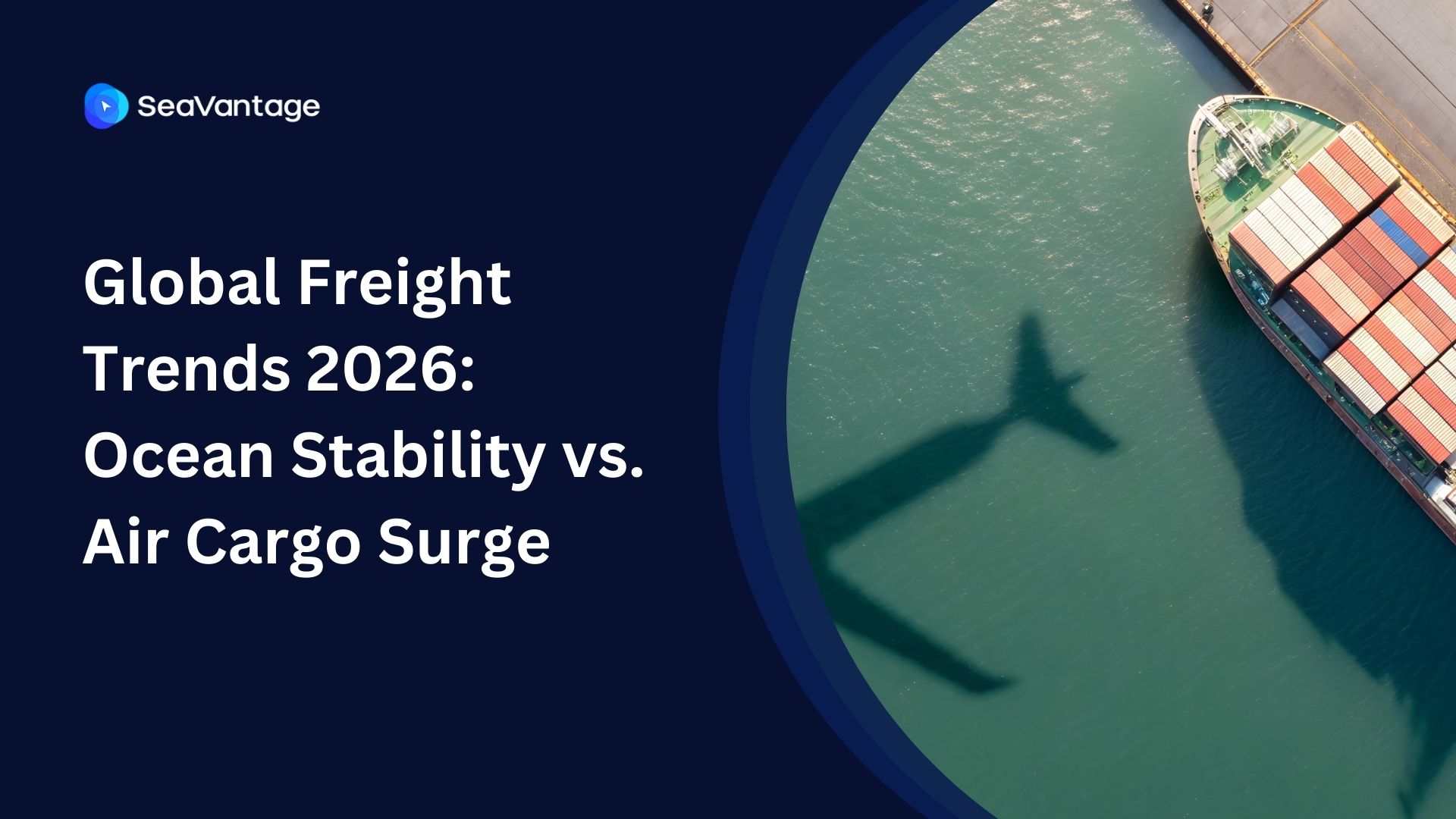Navigating U.S. Tariffs: Strategies for Ocean Supply Chain Stakeholders

In April 2025, the United States introduced a new wave of steep tariffs, particularly targeting Chinese imports. These changes are significantly disrupting global ocean freight operations. This article explores the key impacts of the tariffs on the ocean supply chain, including port congestion, trade lane shifts, and evolving logistics strategies. It also outlines how platforms like SeaVantage are helping carriers, freight forwarders, and shippers navigate increased complexity with real-time visibility and predictive tools. Read on for actionable steps and insights on how to respond effectively.
Introduction
The resurgence of steep U.S. tariffs—particularly on Chinese imports—is once again disrupting global ocean freight. For stakeholders across the maritime logistics chain, from BCOs and freight forwarders to port authorities, the implications are immediate and multifaceted. As geopolitical dynamics intensify, supply chain leaders must reassess their sourcing strategies, routing decisions, and visibility tools. In this environment, platforms like SeaVantage have become increasingly indispensable.
A New Chapter in U.S.–China Tariffs
In April 2025, the U.S. government announced a sweeping set of tariff hikes targeting a broad range of imported goods. Chinese exports, in particular, are facing significant increases—some categories now subject to tariffs as high as 54%.
But this is not simply a repeat of the 2018 trade war. It’s unfolding faster, across a wider scope, and with more uncertainty than before.
Key Impacts on the Ocean Supply Chain
These policy changes are already triggering visible shifts:
- A surge in pre-tariff shipments, leading to short-term port congestion and equipment imbalances
- Declining volumes on core transpacific routes after implementation
- A strategic pivot in sourcing—many businesses are turning to Southeast Asia and Latin America
Port Congestion: A Pressure Point
U.S. ports, especially along the West Coast, are bracing for impact. As importers rush to bring in goods ahead of tariff deadlines, terminals face growing strain:
- Congestion as vessels arrive in compressed timelines
- Extended dwell times due to limited yard space and truck capacity
- Shortages of equipment, particularly chassis and empty containers needed for export
Yet once the pre-tariff surge passes, demand may decline just as sharply. This volatility can lead to underutilized terminal resources, blank sailings, and scheduling disruptions across the board.
For Carriers and Forwarders: Adapting to New Trade Patterns
Ocean carriers must remain nimble in the face of shifting trade dynamics. If volumes out of China decline, we’re likely to see:
- Capacity reductions or suspended sailings on China–U.S. lanes
- Increased volume from countries such as Vietnam, India, and Mexico
- More complex routing needs, including multimodal solutions as shippers diversify suppliers
For freight forwarders, the priority is staying ahead of client questions and routing changes. Many are turning to real-time visibility platforms like SeaVantage to anticipate congestion, adjust itineraries, and provide timely updates.
Why Visibility and Agility Matter Now More Than Ever
Tariffs are not just a policy concern—they’re a logistical shockwave. Sudden changes in shipping costs force rapid decision-making. That’s why access to accurate, real-time data is critical.
SeaVantage offers capabilities designed for today’s challenges:
- Live vessel tracking across global trade lanes
- Port congestion alerts to help avoid delays
- Predictive ETA tools that account for route changes and weather conditions
- End-to-end, multi-leg visibility, enabling decisions across ocean, rail, and road
In a time of uncertainty, these tools enable businesses to react quickly, minimize risk, and maintain service reliability.
What Supply Chain Teams Should Do Now
Here are four practical steps logistics teams can take to stay ahead of tariff-related disruption:
- Reassess sourcing strategies
Consider tariff exposure as a key factor in country-of-origin planning. - Leverage predictive visibility platforms
Tools like SeaVantage provide the data needed to make smarter, faster routing decisions. - Communicate proactively
Keep customers, internal stakeholders, and partners informed with real-time updates. - Monitor port health continuously
A delay of just a few days at a congested terminal can outweigh the cost of the tariff itself.
Final Thought
The global ocean freight industry is no stranger to volatility. But that doesn’t make navigating it any easier. Tariffs affect more than just pricing—they reshape cargo flows, vessel utilization, and the broader structure of supply chains.
In a landscape shaped by constant policy shifts, visibility is no longer optional—it’s essential.
At SeaVantage, we’re committed to helping logistics teams meet these challenges head-on. Whether you’re rerouting cargo, adjusting timelines, or planning for the next disruption, we provide the clarity and confidence to keep your business moving forward.
2025년 9월, 주요 글로벌 항만에서 어떤 운송사가 가장 긴 선박 체류 시간을 기록했는지 확인해보세요. 트렌드를 비교하고, 지연을 파악하며, 전체 항만 데이터를 통해 운송 전략을 최적화할 수 있습니다.
2025년 8월, 주요 글로벌 항만에서 어떤 운송사가 가장 긴 선박 체류 시간을 기록했는지 확인해보세요. 트렌드를 비교하고, 지연을 파악하며, 전체 항만 데이터를 통해 운송 전략을 최적화할 수 있습니다.
2025년 7월, 주요 글로벌 항만에서 어떤 운송사가 가장 긴 선박 체류 시간을 기록했는지 확인해보세요. 트렌드를 비교하고, 지연을 파악하며, 전체 항만 데이터를 통해 운송 전략을 최적화할 수 있습니다.
iscover the 4 critical ocean freight trends for 2026, from the Red Sea reopening and fleet overcapacity to shifting global trade maps. Prepare your supply chain now.
Discover key 2026 freight market trends: Port of Houston expansion, air cargo "super peak," and ocean freight stability. Plan your supply chain with SeaVantage.
Explore November 2025 global port dwell time data. See which ports and carriers led in efficiency across Antwerp, Busan, Long Beach, Rotterdam, and Singapore.



.svg)





.jpg)

.png)